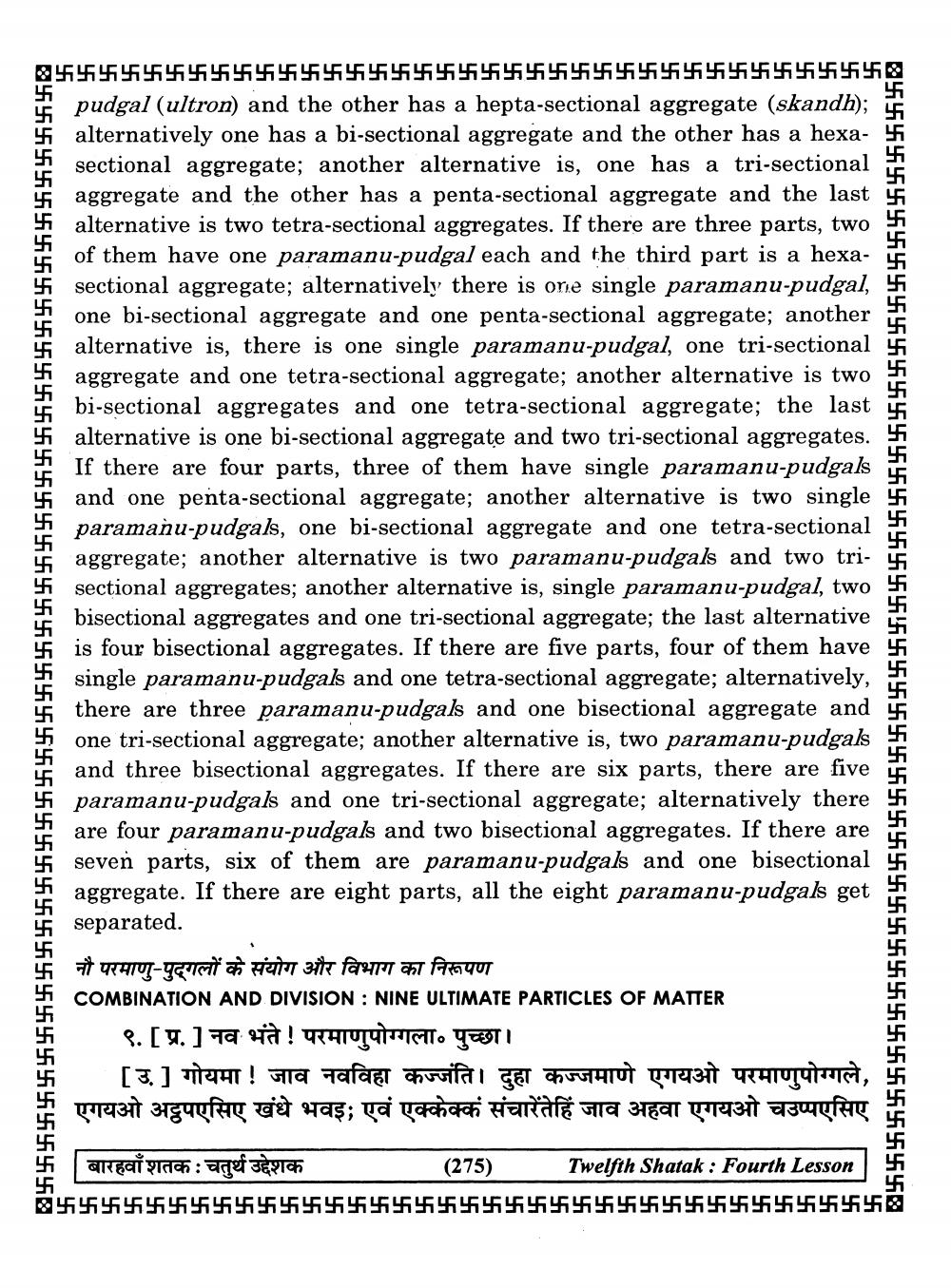________________
0414141414141444444444444444444444444444444444444444444444448
04444444444444444444444444444444444444419
pudgal (ultron) and the other has a hepta-sectional aggregate (skandh); alternatively one has a bi-sectional aggregate and the other has a hexasectional aggregate; another alternative is, one has a tri-sectional aggregate and the other has a penta-sectional aggregate and the last alternative is two tetra-sectional aggregates. If there are three parts, two of them have one paramanu-pudgal each and the third part is a hexasectional aggregate; alternatively there is one single paramanu-pudgal, one bi-sectional aggregate and one penta-sectional aggregate; another alternative is, there is one single paramanu-pudgal, one tri-sectional aggregate and one tetra-sectional aggregate; another alternative is two bi-sectional aggregates and one tetra-sectional aggregate; the last alternative is one bi-sectional aggregate and two tri-sectional aggregates. If there are four parts, three of them have single paramanu-pudgals and one penta-sectional aggregate; another alternative is two single paramanu-pudgals, one bi-sectional aggregate and one tetra-sectional aggregate; another alternative is two paramanu-pudgals and two trisectional aggregates; another alternative is, single paramanu-pudgal, two bisectional aggregates and one tri-sectional aggregate; the last alternative is four bisectional aggregates. If there are five parts, four of them have 4 single paramanu-pudgals and one tetra-sectional aggregate; alternatively, there are three paramanu-pudgals and one bisectional aggregate and one tri-sectional aggregate; another alternative is, two paramanu-pudgals and three bisectional aggregates. If there are six parts, there are five paramanu-pudgals and one tri-sectional aggregate; alternatively there are four paramanu-pudgals and two bisectional aggregates. If there are seven parts, six of them are paramanu-pudgals and one bisectional aggregate. If there are eight parts, all the eight paramanu-pudgals get separated. नौ परमाणु-पुद्गलों के संयोग और विभाग का निरूपण COMBINATION AND DIVISION : NINE ULTIMATE PARTICLES OF MATTER
9. [9. ] Tajā ! 441UT INTO YETI
[उ.] गोयमा ! जाव नवविहा कज्जति। दुहा कज्जमाणे एगयओ परमाणुपोग्गले, की एगयओ अट्ठपएसिए खंधे भवइ; एवं एक्केक्कं संचारेंतेहिं जाव अहवा एगयओ चउप्पएसिए
ansat prach: aqef PTC
(275) Twelfth Shatak : Fourth Lesson 044444444444444444444444444444444444447




